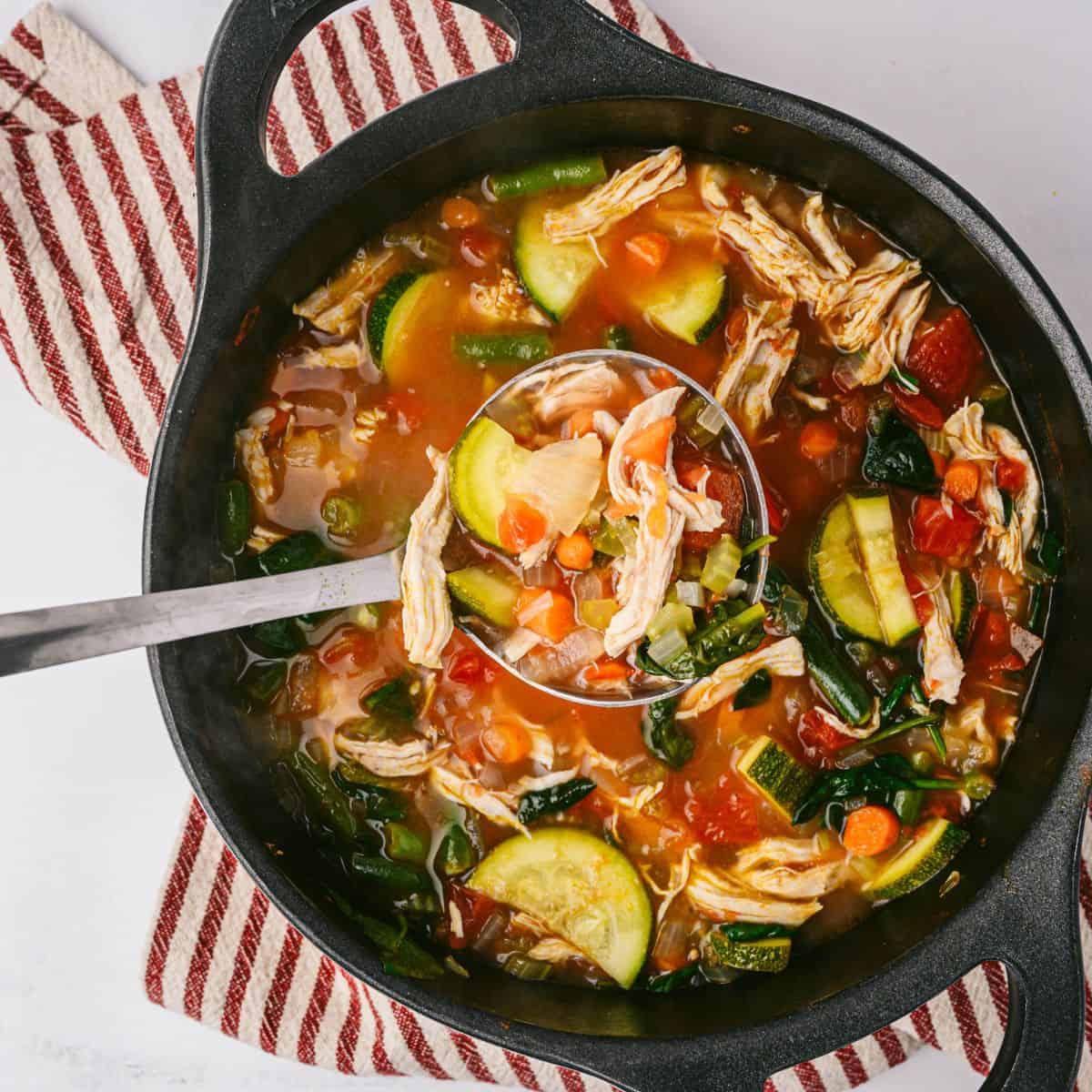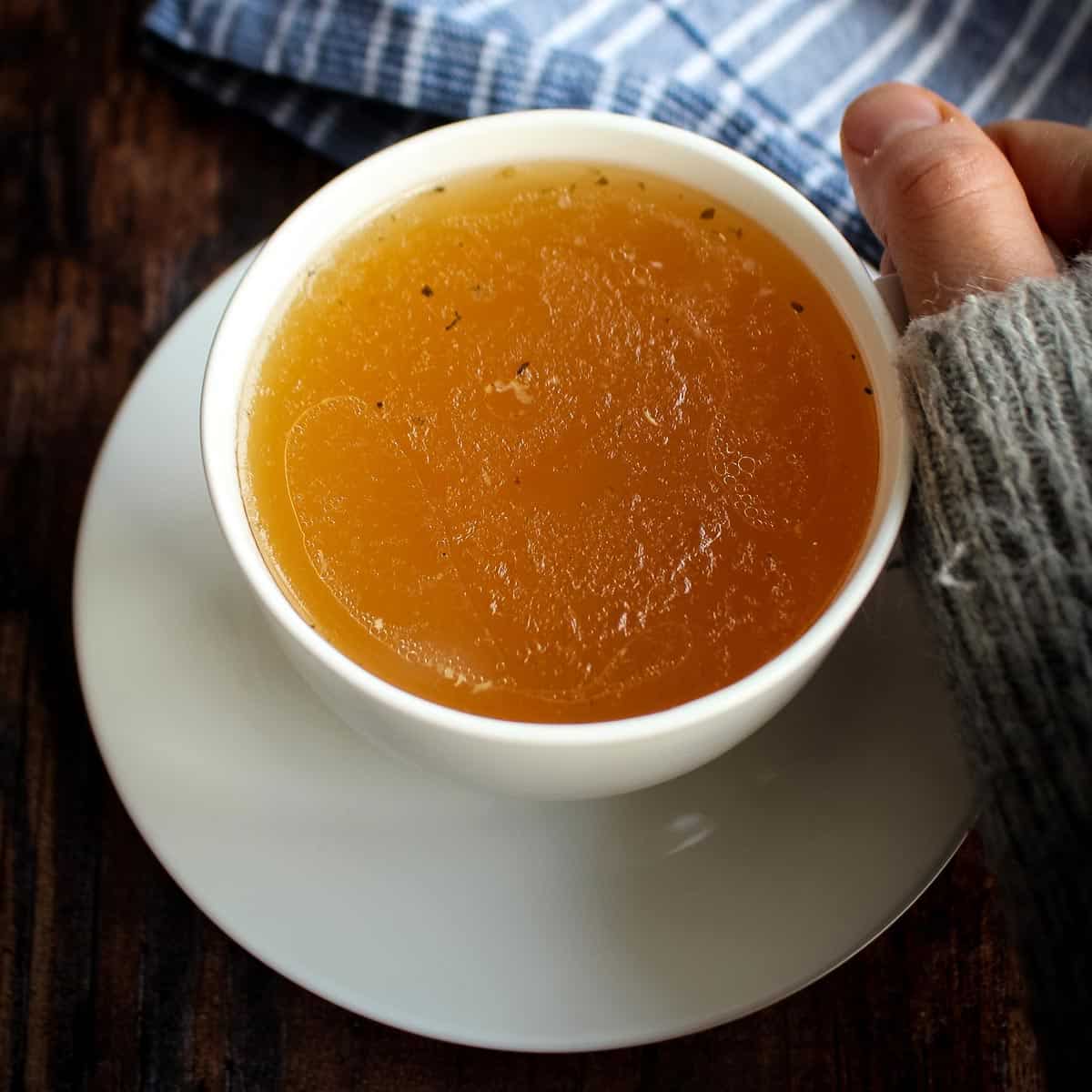Top Chef Tips for Getting the Most Out of Chicken Broth in Your Recipes
Top Chef Tips for Getting the Most Out of Chicken Broth in Your Recipes
Blog Article
The Ultimate Overview to Appreciating and making Organic Bone Broths at Home
Bone brew has actually acquired attention for its countless health benefits and culinary convenience. Crafting natural bone broth in the house enables people to regulate the quality of active ingredients, making sure a healthy outcome. Recognizing the selection of bones, vital flavor elements, and appropriate food preparation strategies is crucial. As the procedure unfolds, one may question just how to boost their broth past the fundamentals and incorporate it into everyday meals for improved taste and nutrition.
Comprehending the Wellness Perks of Bone Broth
Bone brew has actually been a staple in different foods for centuries, its health benefits have gotten considerable interest in recent years. Rich in collagen, amino acids, and minerals, bone brew is typically touted for its potential to sustain joint wellness, enhance digestive tract function, and boost skin flexibility. The gelatin obtained from cooked bones might help digestion and assistance seal the digestive tract lining, potentially minimizing issues like leaking digestive tract syndrome.Furthermore, the visibility of nutrients such as glucosamine and chondroitin might contribute to reduced inflammation and discomfort alleviation in joints. Additionally, bone brew is hydrating and can serve as a nourishing base for stews and soups. Many advocates likewise assert that it increases the immune system, thanks to its mineral profile. Generally, the rebirth of passion in bone brew is linked to its regarded ability to promote total well-being and support different physical features.
Selecting the Right Bones for Optimum Flavor and Nutrition
What variables should one think about when picking bones for broth prep work? The type of bones made use of substantially affects both taste and nutritional value. It is essential to pick bones that include a mix of marrow bones, joint bones, and weighty bones. Marrow bones provide abundant tastes and healthy and balanced fats, while joint bones add collagen, enhancing the broth's dietary profile.Additionally, sourcing bones from pasture-raised or grass-fed animals guarantees higher quality and even more nutrients, as these animals are normally much healthier. The quality of the bones is likewise essential; selecting bones from local butchers or farmers' markets can ensure perfect flavor. Bone dimension matters too; larger bones launch even more gelatin, leading to a richer brew. Thinking about the kind of animal-- beef, hen, or fish-- can affect the last taste, allowing for functional broth options tailored to specific choices.
Vital Components for a Flavorful Bone Brew

Quality Bone Selection
The foundation of a tasty bone brew depends on the careful choice of top quality bones. Sourcing natural, pasture-raised or grass-fed bones is important, as these alternatives are extra likely to be free from dangerous additives and give premium nutrients. Ranges such as lamb, hen, or beef bones each present unique tastes and health advantages. Bone types, consisting of marrow bones, knuckle bones, and oxtails, contribute jelly and collagen, enhancing the broth's structure. Selecting bones with a mix of meat and connective cells can likewise add richness and deepness. Furthermore, selecting bones with noticeable marrow ensures a nutrient-dense broth, boosting the general top quality. Inevitably, investing time in quality bone selection lays the groundwork for a nourishing and delicious broth.
Fragrant Flavor Boosters
Choosing high-quality bones sets the stage for a abundant and nutritious bone broth, however it is the enhancement of aromatic taste enhancers that genuinely elevates the dish. Active ingredients such as onions, garlic, and carrots not just pass on sweetness but also add depth to the broth. Fresh herbs like thyme, parsley, and bay leaves include a fragrant note, while flavors such as black peppercorns and cloves introduce warmth and intricacy. In addition, incorporating a splash of apple cider vinegar can assist remove minerals from the bones, enriching the broth. These flavor enhancers create a harmonious blend, changing a straightforward broth right into a full-flavored foundation for sauces, stews, or soups, making it a versatile element in any culinary arsenal.
Step-by-Step Guide to Making Bone Brew in the house
Creating bone brew at home can be a rewarding culinary undertaking that improves both taste and nutrition in numerous meals. To start, one should choose top quality bones, preferably from grass-fed or natural resources. Toasting the bones at 400 ° F for about 30 mins can intensify the flavor. Next off, transfer the roasted bones to a big pot or sluggish cooker and cover them with cool water. Including a dash of vinegar assists remove minerals from the bones.Include fragrant veggies like onions, carrots, and celery for included deepness, along with herbs and seasonings as wanted. Bring the mix to a boil, after that decrease to a simmer. It is important to let the broth simmer for a minimum of 12 hours, however longer is more suitable for maximum splendor. Strain the broth through a fine-mesh sieve and store it in closed containers, ready to raise dishes with its nourishing essence.
Tips for Developing Your Bone Brew Simmer
While simmering bone broth, keeping the ideal temperature and timing is crucial for accomplishing a delicious and abundant outcome. A mild simmer, preferably in between 190 ° F and 210 ° F, aids extract optimum nutrients and tastes without steaming, which can make the broth cloudy. It is suggested to keep an eye on the pot very closely, changing the warm as necessary to maintain this simmer.Timing is likewise important; a longer simmer, normally ranging from 12 to 2 days, permits deeper flavor extraction and collagen release. For hen bones, a 12 to original site 24-hour simmer is adequate, while beef bones gain from longer cooking times.Additionally, skimming off any foam or impurities that climb to the surface during the initial few hours can improve the brew's clarity and taste. Lastly, making sure the pot is covered throughout simmering helps to retain wetness and increase the tastes, making for an extra gratifying final product.
Innovative Ways to Use Bone Brew in Your Food preparation
Integrating bone brew into various recipes elevates both taste and dietary value. Cooks and home chefs alike discover that utilizing bone broth as a base for soups and stews enhances deepness and splendor, changing basic recipes right into hearty meals. It can additionally be employed in risottos, where the brew changes water, permitting the grains to absorb its tasty essence.Additionally, bone broth works as an outstanding cooking fluid for grains like quinoa or rice, instilling them with nutrients and flavor. For an added twist, it can be made use of in braising meats, resulting in tender, flavorful end results. Also sauces gain from a dash of bone broth, enhancing their preference profile.Moreover, bone broth can be integrated into healthy smoothies for an unanticipated health and wellness boost, offering protein and nutrients without compromising preference. These innovative applications showcase the convenience of bone broth in everyday cooking, making it a vital kitchen staple.
Saving and Maintaining Your Home Made Bone Broth
Proper storage space and conservation of homemade bone broth is essential for maintaining its flavor and nutritional advantages. Freezing methods and refrigeration finest practices play a crucial role in extending the brew's rack life. Understanding these techniques can aid guarantee that the broth continues to be secure and scrumptious for future usage.

Freezing Strategies Discussed
Freezing methods are crucial for properly saving and protecting self-made bone broth, ensuring its rich tastes and nutrients continue to be undamaged for future use. To freeze bone brew, it is suggested to allow it cool entirely prior to transferring it to storage space containers. Glass containers, silicone molds, or sturdy freezer bags are ideal alternatives. When utilizing containers, leave space on top for growth during freezing. Portioning the broth right into smaller sized quantities allows for simple thawing and minimizes waste. Tag containers with the date and contents for simple identification. For peak quality, take in the frozen brew within three to six months - Benefits Of Bone Broth. Defrosting can be carried out in the refrigerator or by using a microwave, making certain that the broth is heated thoroughly before intake
Refrigeration Best Practices
While many emphasis on freezing as a technique of conservation, refrigeration also plays an essential function in saving homemade bone brew successfully. As soon as cooled, bone brew ought to be transferred to impermeable containers, assuring very little air exposure to avoid putridity. It is advisable to cool broth within 2 hours of cooking to keep its quality. Generally, homemade bone brew can be saved in read review the fridge for approximately 5 days. Classifying containers with dates can assist track freshness. For peak taste and security, broth ought to be reheated to a rolling boil before usage. If longer storage space is needed, freezing continues to be an outstanding choice, however correct refrigeration practices guarantee that bone brew remains nutritious and tasty for short-term usage.
Frequently Asked Concerns
Can I Utilize Frozen Bones for Making Bone Broth?
The question of using icy bones for bone brew occurs frequently (Chicken Broth). Specialists agree that icy bones can be utilized efficiently, but they need to be thawed before cooking to guarantee suitable taste and nutrient extraction
Exactly How Lengthy Can I Shop Homemade Bone Brew?

Is It Safe to Reheat Bone Brew Several Times?
Reheating bone brew several times can posture safety issues - Chicken Broth. Each reheating cycle raises the threat of microbial development. It is recommended to reheat only when and save any kind of leftovers quickly to assure safety and security and quality
Can I Include Vegetables to the Broth for Flavor?
Adding vegetables to broth enhances taste and nutritional value. Typical options consist of carrots, onions, and celery. The vegetables instill their essence into the brew, creating a richer and more full-flavored end product.
What's the most effective Method to Defrost Icy Bone Brew?
To thaw frozen bone brew, one can place it in the refrigerator overnight, utilize a microwave on reduced warmth, or immerse the secured container in warm water, making certain even defrosting without endangering flavor or nutrients. It is essential to select bones that include a mix of marrow bones, joint bones, and meaty bones. Marrow bones give healthy fats and rich flavors, while joint bones contribute collagen, boosting the brew's dietary profile.Additionally, sourcing bones from pasture-raised or grass-fed pets assurances higher top quality and even more nutrients, as these animals are commonly much healthier. Bone kinds, consisting of marrow bones, knuckle bones, and oxtails, add gelatin and collagen, boosting the brew's texture. Selecting top notch bones establishes the stage for a nutritious and abundant bone brew, yet it is the addition of fragrant taste boosters that truly boosts the dish. Also sauces profit from a dash of bone brew, improving their taste profile.Moreover, bone broth can be included into smoothie mixes for an unforeseen health boost, supplying protein and nutrients without compromising preference.
Report this page